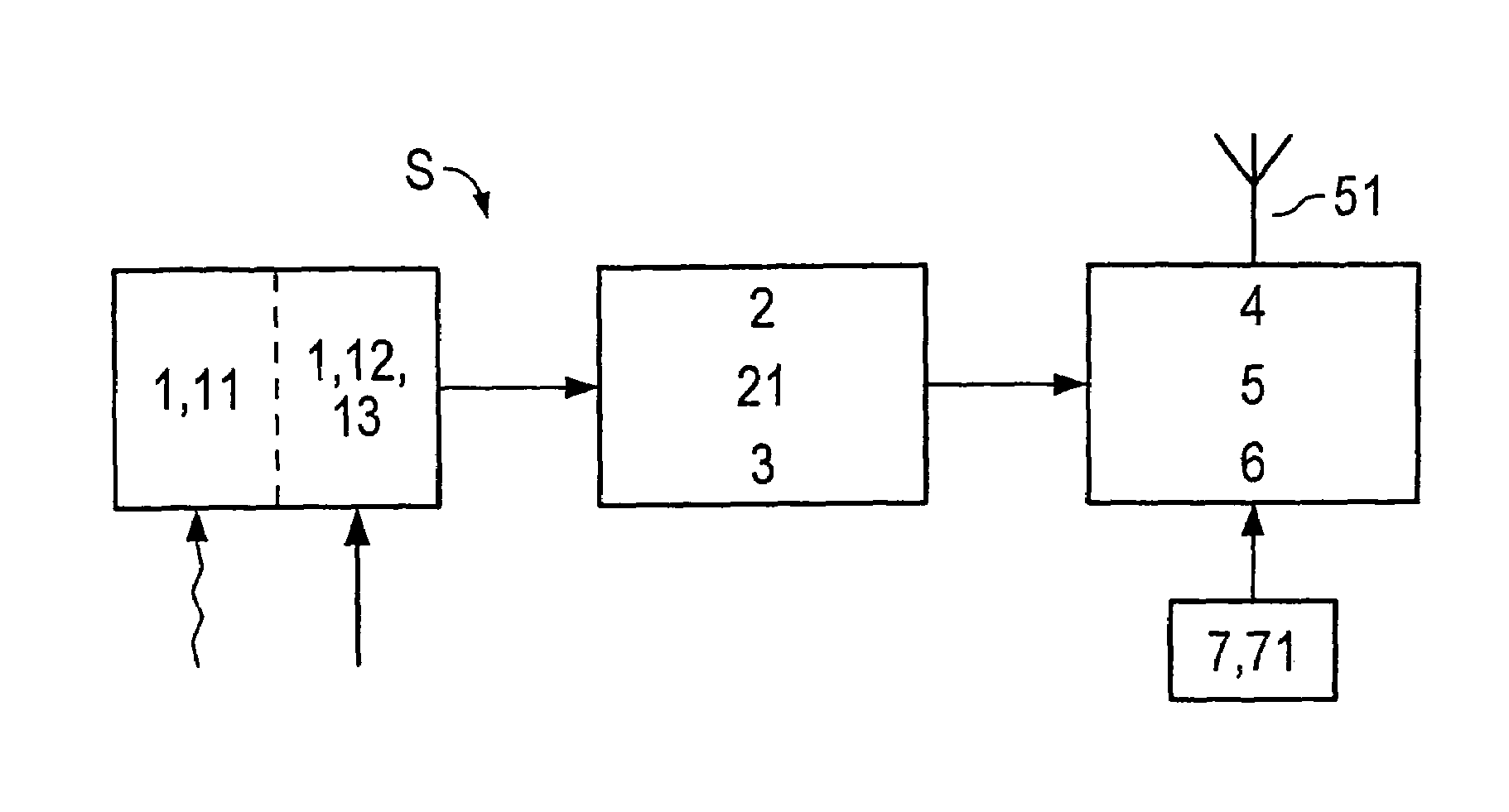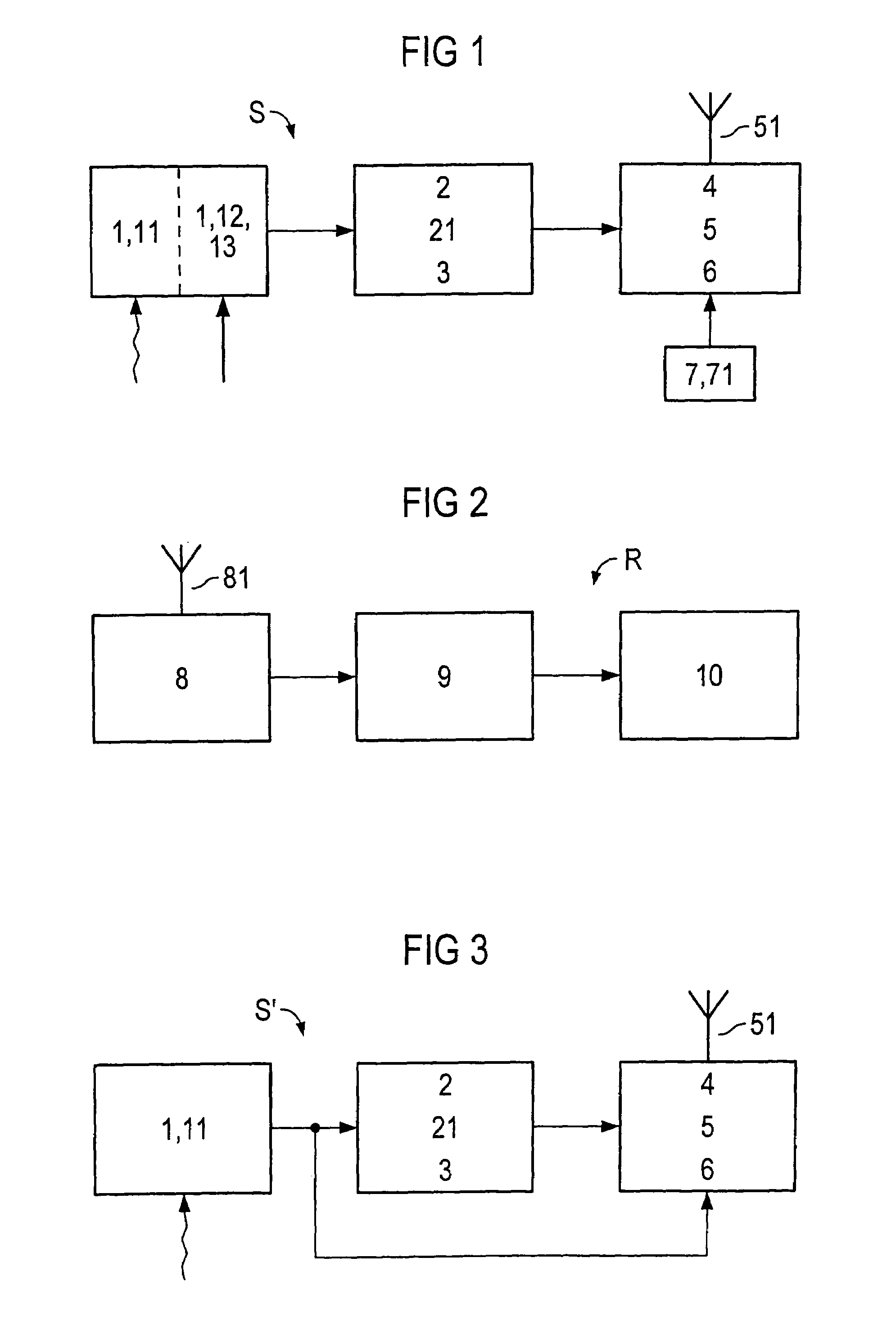Wireless sensor system
a sensor system and wireless technology, applied in transmission systems, tire measurement, sustainable buildings, etc., can solve problems such as logistic problems, battery service, and complex wiring, and achieve the effect of costs, reducing the number of wires, and improving the service li
- Summary
- Abstract
- Description
- Claims
- Application Information
AI Technical Summary
Problems solved by technology
Method used
Image
Examples
Embodiment Construction
[0023]FIG. 1 shows a block diagram of a sensor system S for position finding.
[0024]The wire-free sensor system S passes on information by radio to actuators, bus systems or display elements, which are typically connected to the electrical mains system. The power for operation of the sensor system S together with the associated radio transmitter 5 is supplied from the ambient lighting and / or from the mechanical movement of the devices to be monitored, so that there is no need for a battery to operate it.
[0025]A voltage generator 1 in the form of a solar cell 11 (in general: a photovoltaic element) produces an electrical voltage when light falls on it. This is designed such that a voltage of about two volts is emitted even when the illumination intensities are low. For cost reasons, the solar cell 11 is preferably chosen to be sufficiently small that the processor controller 4 cannot be operated directly from it continuously. This is possible, for example, when a low frequency is used...
PUM
 Login to View More
Login to View More Abstract
Description
Claims
Application Information
 Login to View More
Login to View More - R&D
- Intellectual Property
- Life Sciences
- Materials
- Tech Scout
- Unparalleled Data Quality
- Higher Quality Content
- 60% Fewer Hallucinations
Browse by: Latest US Patents, China's latest patents, Technical Efficacy Thesaurus, Application Domain, Technology Topic, Popular Technical Reports.
© 2025 PatSnap. All rights reserved.Legal|Privacy policy|Modern Slavery Act Transparency Statement|Sitemap|About US| Contact US: help@patsnap.com


